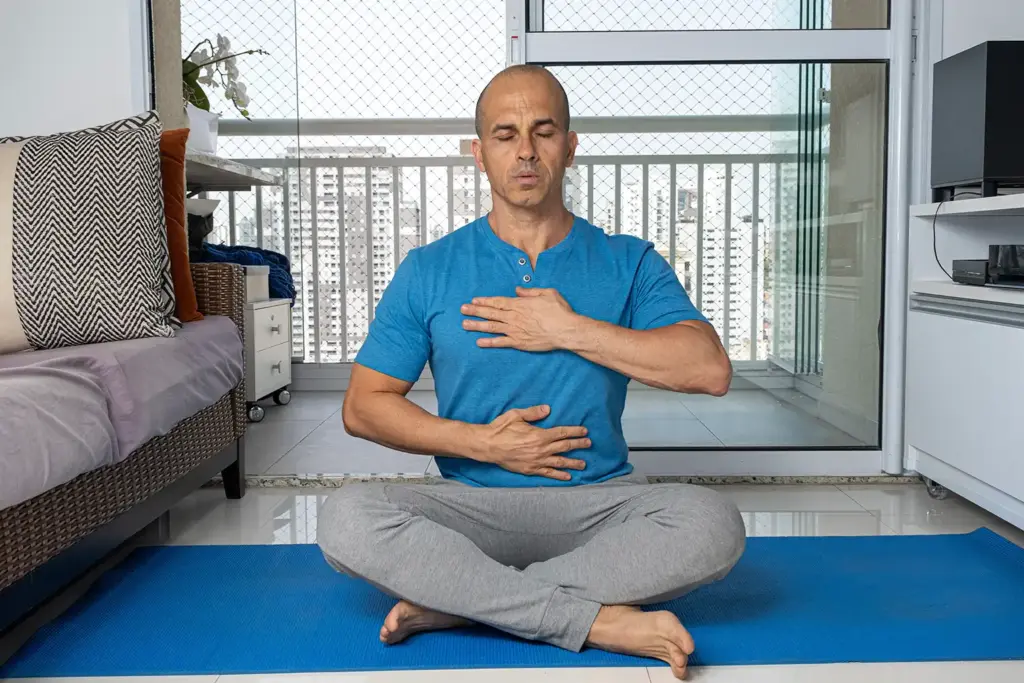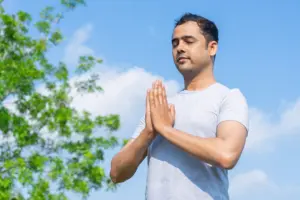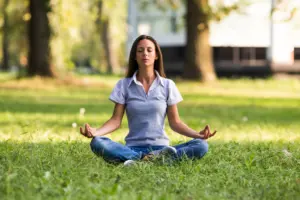
Yoga for sleep: In today’s fast-paced world, it’s easy to feel tired, anxious, and unfocused. Many of us struggle with poor sleep at night and scattered attention by day. If you’re looking for a simple, natural reset, yoga breathing (pranayama) can help. This guide walks you through beginner-friendly breathing techniques and supportive yoga practices to improve sleep quality and sharpen focus.
What is yogic breathing?
In yoga, pranayama means breath control. ‘Prana’ stands for energy, while ‘yama’ stands for regulation. It’s the practice of using your breath to steady your energy and mind. We breathe on autopilot, but when you breathe with awareness, powerful shifts happen: a calmer mind, a more relaxed body, and sharper focus.
Also Read | Can’t sleep? 10 quick hacks to stop snoring tonight
How does breathing help you?
When you’re stressed or anxious, your breath turns shallow and rapid, telling your body there’s a threat and keeping you wired, which is the last thing you need at bedtime. Yogic breathing reverses this pattern by slowing the heart rate, relaxing muscles, and calming racing thoughts. Certain patterns activate the parasympathetic system, making it easier to drift off and stay asleep.
How does breathing help with focus?
Just as breathwork can ease you into sleep, it can also switch on your brain when energy dips. Deep, mindful breathing boosts oxygen delivery, sharpening alertness and cutting through distraction. Next time you feel drowsy or overwhelmed, try a quick breathing drill before reaching for another coffee.
Simple yoga breathing techniques you can try:
Deep belly breathing:
Great for relaxation and better sleep: sit or lie comfortably, with one hand on your chest and the other on your belly. Inhale slowly through your nose, feel the belly rise, and exhale gently. This trains deeper, slower breathing and sends calming signals to your brain.

Box breathing:
Great for focus and steadying nerves. Inhale for 4 counts, hold for 4, exhale for 4. Repeat this cycle. This “box breathing” technique, used by athletes and soldiers, can cut anxiety, sharpen attention, and slow racing thoughts.
When and how often should you practice breathing techniques?
You don’t have to practice every technique at once. For sleep, do a few rounds in the evening or right before bed. Try a quick focus session in the morning or midday when you need a mental reset. Even 5–10 minutes helps. The real secret is consistency. Aim for daily practice or a few times a week.
Also Read | Morning vs. evening yoga: What’s best for your body?
Always breathe through your nose unless a technique says otherwise. Don’t force it. Keep breathing easily and naturally. If you feel dizzy or uncomfortable, pause and breathe normally. Fold practice into your routine (like brushing your teeth). We all breathe without thinking, but in yoga, your breath becomes a tool for better sleep, sharper focus, and steadier moods.








